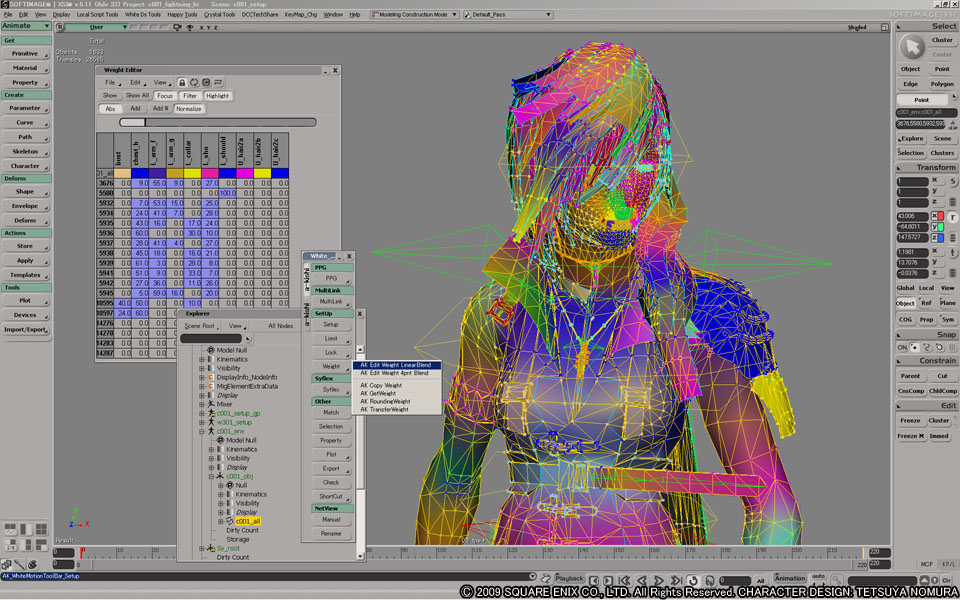A attempt at putting together a animation road-map for ZGE. First off, a quick overview of the most prominent concepts.
---
F-Curve ( Function Curve )
A F-Curve is a 1D curve generated from a number of control points. Each point is indexed by its frame ( time-stamp ) and holds a value + 2 tangents.

Visual representation of a F-Curve
Tree
A hierarchical tree ( parent-child relation ) provides a framework to simplify animating individual entities that influence each other.

Visual representation of a hierarchical tree
FK ( Forward Kinematics )
FK is the default hierarchical behavior causing a "parent" to forward transformations to its "children".
IK ( Inverse Kinematics )
IK is a hierarchical behavior that causes a "child" to influence its "parent" ( influence can be multiple levels deep ).
Morph
Morph is a technique for deforming a mesh from one shape into another. Each shape ( aka morph-target ) contains the relative translation of all affected vertices.

Single morph-target applied 100%
Bone
A bone is a basically a special purpose transformation matrix.
Skin
Skin ( aka Envelope ) is a technique to deform a mesh based on a bone-structure. The mesh requires a Weight-Map which connects each vertex to a number of bones at a certain percentage ( total of 100% ).

Visual representation of a Weight-Map
K

